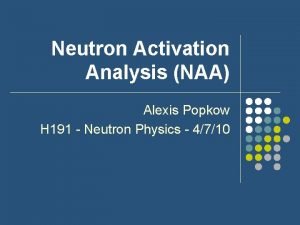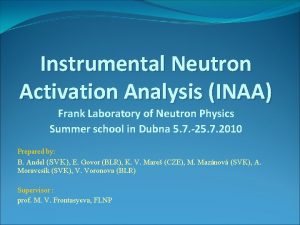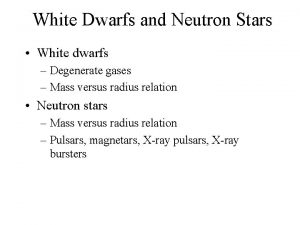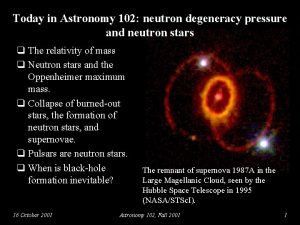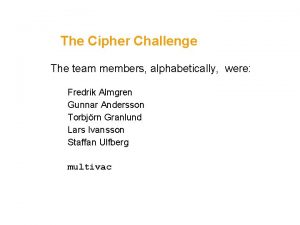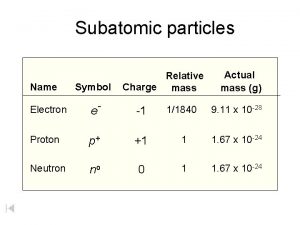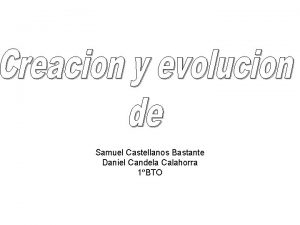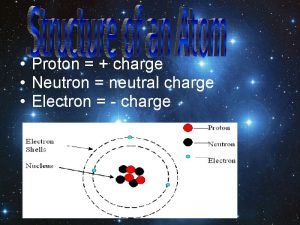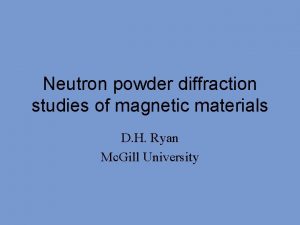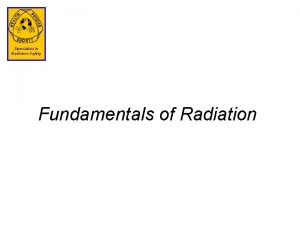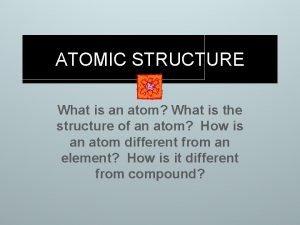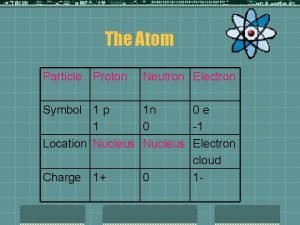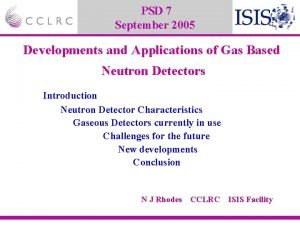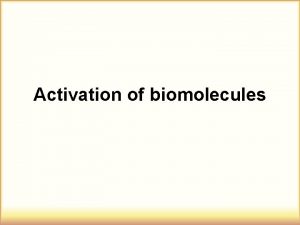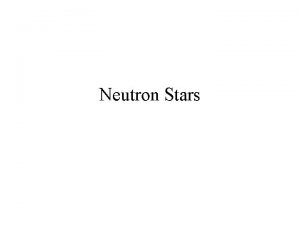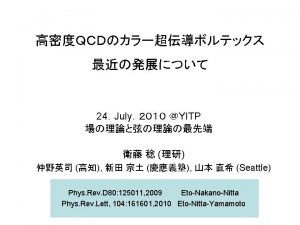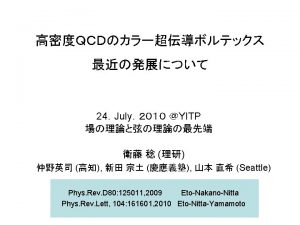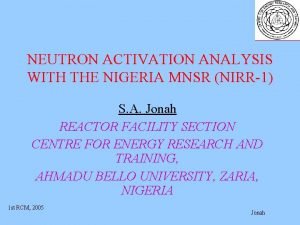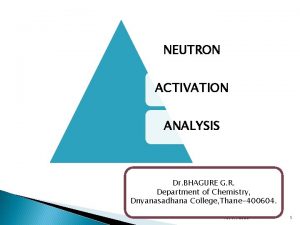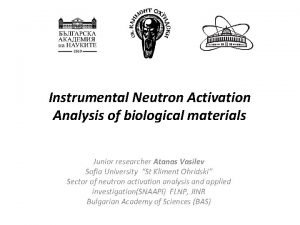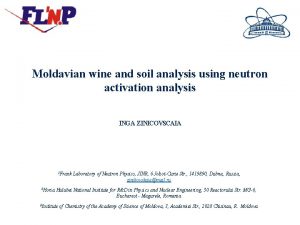Neutron Activation Analysis n n n Neutron Activation
















- Slides: 16

Neutron Activation Analysis n n n Neutron Activation Analysis (NAA) – one of a number of techniques used to accurately determine the concentrations of elements in a sample. This process requires the use of a nuclear reactor to irradiate the sample. We will illustrate this process with a plant sample to determine the amount of a particular metal its tissues contain (example: arsenic).

1. Obtain plant sample. Wash the sample to remove possible contaminants.

2. n n n Dehydrate the sample. Dehydration methods use heat or freezedrying. A lyophilizer is frequently used for the freeze-dry method. A plant sample is then placed in the chamber atop the lyophilizer to the right.

3. The dehydrated sample is then prepared for testing. A small amount of dehydrated plant material is removed from this bag.

4. A portion of the dried plant material is ground into a powder using a mortar and pestle. Sterile technique is required to avoid cross contamination.

5. Bag the sample. Some of the ground plant powder is bagged into a small plastic envelope. The sample is double-bagged and labeled.

6. n n n Select a standard for comparison. When looking for arsenic in plant material, you would need to prepare a sample of a standard containing arsenic. The “standard” contains a known quantity of the element you are looking for. Containers of certified standards are pictured.

7. Place packages of both the prepared sample and standard sample in a capsule.

8. Take sample to the rabbit system apparatus. n n n The rabbit system works much like the system used by banks at drive-through windows. A canister carries items back and forth between the customer and teller. The sample is sent through the wall in a mini canister into the nuclear reactor located behind the wall. Once inside the reactor, the sample is irradiated with neutrons.

8 (a). This is a close-up view of a capsule being placed into the rabbit system. Sterile technique is required.

9. After irradiation of the sample in the capsule, and before removing it from the reactor site, it must be determined if the capsule is safe for transfer. A Geiger counter is used to assess whether the radioactive decay has reached low enough levels to be safe.

10. The prepared sample and standard sample are placed in a “detector” one at a time. n n The detector system counts and records gamma radiation emissions for a period of time. Time varies, but is usually in the range of 5 minutes to an hour.

11. Counts recorded by the detector system is sent to a computer.

12. Specialized software analyzes radiation peaks. Peak data is correlated to specific elements for identification and quantification.

13. Computer data is compared to a nuclide chart to evaluate the results.

Uses of Neutron Activation Analysis n n n NAA can be used to determine the presence of a variety of elements in a sample. Examples include: Mercury levels in tuna fish Aluminum levels in finger nails Gold levels in hair Zinc levels in soil Arsenic levels in plants (Photos courtesy of the Laboratory Facility at the University of Florida Training Reactor)
 Neutron activation analysis
Neutron activation analysis Neutron activation analysis
Neutron activation analysis Activation tree and activation record
Activation tree and activation record Neutron degeneracy pressure
Neutron degeneracy pressure Neutron degeneracy pressure definition
Neutron degeneracy pressure definition Cipher neutron
Cipher neutron Name of symbol
Name of symbol Candela y neutron
Candela y neutron Proton charge
Proton charge How are neutron stars formed
How are neutron stars formed 642008419
642008419 Gold number of neutrons
Gold number of neutrons Partial periodic table
Partial periodic table Neutron degeneracy pressure
Neutron degeneracy pressure Mass of neutron
Mass of neutron Symbol proton neutron elektron
Symbol proton neutron elektron Spallation neutron source
Spallation neutron source
